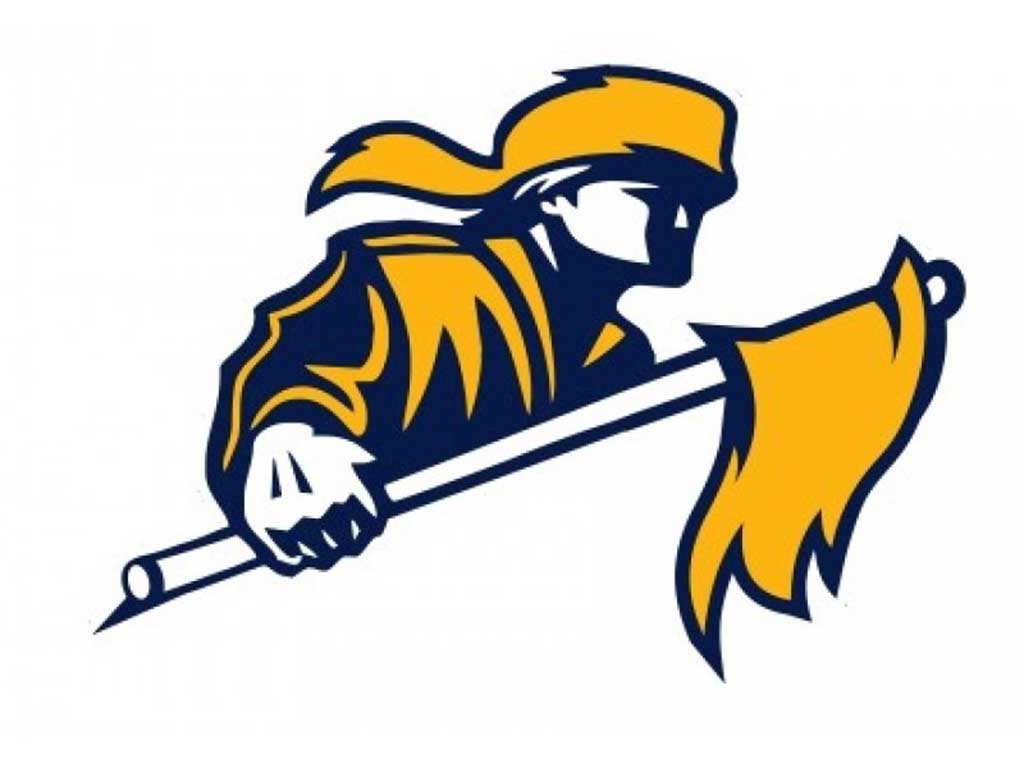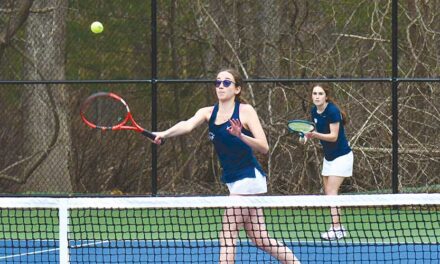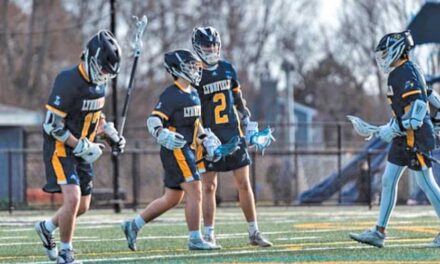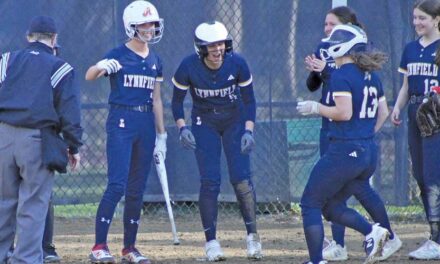Published December 2, 2020

By DAN TOMASELLO
LYNNFIELD — The School Committee gave Lynnfield High School the green light to proceed with winter sports during a Nov. 24 meeting.
Athletic Director Mike Bierwirth recalled that the Massachusetts Interscholastic Athletic Association’s Board of Directors recently voted on winter sports recommendations and sport-specific modifications recommended by the MIAA’s COVID-19 Task Force. He said the Cape Ann League voted to schedule Monday, Dec. 14 as the first day for tryouts and practices.
“Games will start after the new year,” said Bierwirth.
Bierwirth said the boys’ basketball, girls’ basketball, boys’ hockey, Peabody-Lynnfield-North Reading co-op girls’ ice hockey, girls’ swimming and the Lynnfield-Wakefield co-op boys’ swimming teams will be competing this winter. He said indoor track has been moved to the Fall 2 season, which is anticipated to begin on Feb. 22. He said the Lynnfield-North Reading co-op wrestling team will tentatively be competing during the spring season.
L-NR head coach Craig Stone said in an email sent to the Villager that he was not surprised wrestling was moved to the spring season. If the season takes place, he said it will most likely begin during April vacation.
“There are still many unanswered questions regarding that possibility,” said Stone, who coaches the girls’ tennis team in the spring. “What modifications would have to be made, would the season only consists of dual meets and would there be state and local tournaments are only a few of them. Also, what will be the status of the virus at that time and will the Massachusetts Executive Office of Energy and Environmental Affairs’ guidelines allow competition to take place even then. There would also have to be individual decisions made by the athlete who participates in a spring sport, and who has already lost that spring sport from last season. All the above would also have an effect on our ability to compete.”
School Committee Chairman Jamie Hayman asked Bierwirth if fans will be allowed to attend games.
“The CAL is going to leave it up to each school to decide to have fans or not,” said Bierwirth. “Most schools will likely start with no fans for the first few weeks just to see how it goes. And like we did in the fall, we will open it up to only home parents.”
School Committee member Stacy Dahlstedt inquired what will happen to sports if the school system is forced to pivot from its hybrid learning model to remote learning.
“I would still like to continue athletics,” said Bierwirth. “There are a few schools in the CAL that played the whole fall season while their students were remote. I think it would be an unfortunate situation if we didn’t allow students to play athletics as part of their daily routines. Even if we are remote for a month or longer, we would still like to continue athletics.”
Hayman expressed his support for allowing winter sports to be played.
“I don’t see any issues why we wouldn’t proceed with this,” said Hayman.
Similar to the fall season, the MIAA and CAL will be mandating that all student-athletes and coaches wear masks. Teams will also have to maintain six feet of social distancing during practice and team meetings.
The MIAA’s modifications for basketball include eliminating halftime because the length of time between quarters will be extended by an additional two minutes and thirty seconds. On-court huddles and hand touching such as high-fives will be prohibited. A game day roster must include a maximum of 15 players and three coaches. There will also be no jump balls, and a coin toss will determine which team starts the game.
According to the MIAA’s basketball rules, the number of players standing on the side of the free throw line will be limited to four, and players will only be allowed to enter the lanes prior to the final attempt. The MIAA is also prohibiting under the basket out-of-bounds plays.
The MIAA’s modifications for hockey include social distancing on face-offs until the referees call in participants for the puck drop. Only one defensive and offensive player will be permitted in any scrum along the boards, and a third will cause an immediate stoppage of play.
According to the hockey rules, referees will stop play if a scrum in any area of the ice is prolonged greater than five seconds. Only one person will be allowed in the penalty box at a time. Each team will have a limit of 20 players, no more than three coaches and one athletic trainer on the bench. Teams must develop additional areas beyond the team bench for players to spread out for water breaks.
The MIAA’s modifications for swimming include only allowing dual meet in-person competitions. Swimmers will be allowed to take off their masks when he or she steps onto the starting block. Masks will be placed in a plastic bag and will be given back to swimmers at the end of an individual event. The MIAA and CAL will be prohibiting cheering on the pool deck, and relay swimmers will be spaced three- to six-feet apart from each other behind their respective lanes.




